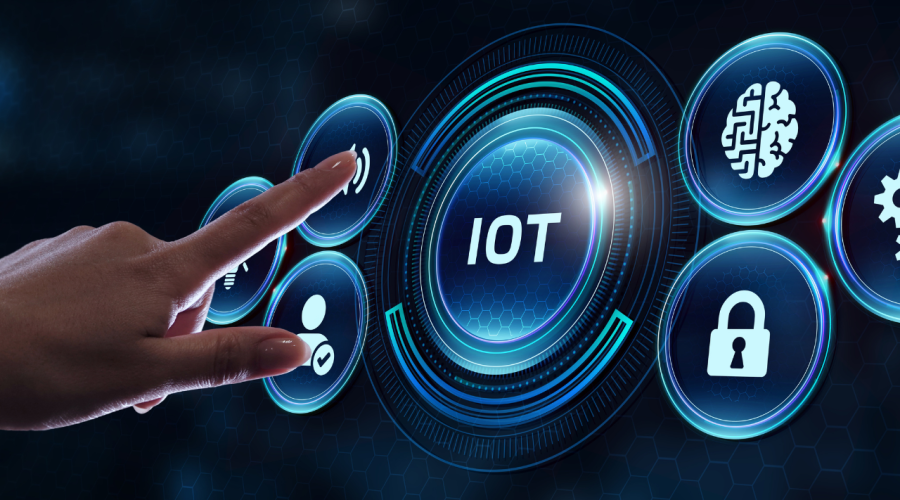IoT AI Security Specialist: Protecting AI-Powered Internet of Things Devices
In today’s interconnected world, the role of a security specialist has become paramount, especially with the proliferation of AI-powered Internet of Things (IoT) devices. These devices, ranging from smart home appliances to industrial sensors, have revolutionized the way we live and work. However, their integration into our daily lives has also introduced a myriad of security challenges. As a security specialist, understanding and mitigating the risks associated with these devices is crucial to safeguarding personal and organizational data.
The Convergence of AI and IoT
The fusion of Artificial Intelligence (AI) and IoT has led to the creation of intelligent systems capable of autonomous decision-making and real-time data processing. This convergence, often referred to as the Artificial Intelligence of Things (AIoT), enhances the capabilities of IoT devices, making them more efficient and responsive. For instance, AI algorithms enable smart thermostats to learn user preferences and adjust temperatures accordingly, while AI-driven security cameras can distinguish between a potential intruder and a harmless passerby.

However, this increased intelligence also expands the attack surface. AI-powered IoT devices often collect and process sensitive data, making them attractive targets for cybercriminals. As a security specialist, it’s essential to assess how AI integration affects the security posture of IoT devices and implement measures to protect them.
Common Security Challenges in AI-Powered IoT Devices
- Data Privacy and Protection: AI-powered IoT devices collect vast amounts of data to function effectively. This data often includes personal information, which, if compromised, can lead to identity theft or unauthorized surveillance. Security specialists must ensure that data is encrypted both in transit and at rest, and that access controls are in place to prevent unauthorized data access.
- Device Authentication and Authorization: Many IoT devices lack robust authentication mechanisms, making it easier for attackers to gain unauthorized access. Implementing strong authentication protocols, such as multi-factor authentication, is vital. Additionally, ensuring that devices have proper authorization levels prevents them from accessing or controlling other networked devices without permission.
- Firmware and Software Vulnerabilities: Outdated firmware or software can contain vulnerabilities that attackers exploit. Regular updates and patches are essential to maintain device security. Security specialists should establish processes for timely updates and ensure that devices can securely receive and install these updates.
- Network Security: IoT devices often communicate over networks that may be unsecured. Implementing secure communication protocols, such as TLS/SSL, and segmenting IoT devices on separate networks can reduce the risk of unauthorized access. Network monitoring is also crucial to detect and respond to suspicious activities promptly.
- Physical Security: Many IoT devices are deployed in accessible locations, making them susceptible to physical tampering. Security specialists should consider physical security measures, such as tamper-evident seals and secure enclosures, to protect devices from unauthorized physical access.
Best Practices for Securing AI-Powered IoT Devices
To effectively protect AI-powered IoT devices, security specialists should adopt a comprehensive approach that encompasses the following best practices:
- Conduct Regular Security Assessments: Regular vulnerability assessments and penetration testing help identify and address potential security weaknesses in IoT devices and their associated networks. These assessments should be conducted periodically and after significant changes to the system.
- Implement Strong Access Controls: Restrict access to IoT devices and their data to authorized users only. This includes using strong, unique passwords for each device and changing default credentials upon deployment. Role-based access controls can further limit user permissions based on their responsibilities.
- Ensure Secure Data Transmission and Storage: Encrypt data transmitted between IoT devices and central systems to protect it from interception. Additionally, secure data storage solutions should be implemented to safeguard data at rest. Utilizing encryption standards such as AES-256 can provide robust protection for sensitive information.
- Develop and Enforce Security Policies: Establish clear security policies that define acceptable use, data handling procedures, and incident response protocols for IoT devices. Regular training ensures that all stakeholders understand and adhere to these policies. Security specialists should also stay informed about emerging threats and update policies accordingly.
- Collaborate with Manufacturers: Engage with device manufacturers to understand the security features of their products and advocate for security improvements when necessary. This collaboration can lead to the development of more secure devices and prompt addressing of identified vulnerabilities.
- Stay Informed About Emerging Threats: The threat landscape is continually evolving. Security specialists must stay updated on the latest threats and adjust their security measures accordingly. Participating in industry forums, attending conferences, and subscribing to security bulletins are effective ways to remain informed.
The Role of Security Specialists in Incident Response
Despite best efforts, security incidents involving AI-powered IoT devices can still occur. Security specialists play a critical role in incident response by:
- Developing Incident Response Plans: Creating and maintaining comprehensive incident response plans that outline the steps to be taken in the event of a security breach. These plans should include communication strategies, roles and responsibilities, and procedures for containment and recovery.
- Conducting Post-Incident Analysis: After an incident, analyzing the root cause and implementing measures to prevent future occurrences. This analysis should be documented and used to improve existing security policies and procedures.
- Coordinating with Law Enforcement and Regulatory Bodies: In cases of significant breaches, security specialists may need to work with external entities to address the incident appropriately. This coordination ensures compliance with legal requirements and can aid in the apprehension of perpetrators.
The Importance of Compliance and Standards
Adhering to established security standards and regulations is essential for maintaining the integrity of AI-powered IoT devices. Security specialists should be familiar with relevant frameworks, such as:
- ISO/IEC 27001: Provides requirements for an information security management system (ISMS) and is widely recognized as a benchmark for good security practices.
- NIST Cybersecurity Framework: Offers guidelines for improving critical infrastructure cybersecurity, including IoT devices.
- GDPR (General Data Protection Regulation): For organizations operating within the European Union, ensuring that IoT devices comply with data protection regulations is mandatory.
Compliance with these standards not only enhances security but also builds trust with users and stakeholders.
Future Trends and Considerations
As technology continues to evolve, security specialists must anticipate and prepare for emerging trends that could impact the security of AI-powered IoT devices:
- Edge Computing: Processing data closer to its source can reduce latency but also introduces new security challenges. Ensuring that edge devices have robust security measures is crucial.
- 5G Connectivity: The widespread adoption of 5G networks will enable more IoT devices to connect simultaneously, increasing the potential attack surface. Security specialists must understand the implications of 5G on IoT security and adapt their strategies accordingly.
- Artificial Intelligence in Cybersecurity: Leveraging AI to detect and respond to threats in real-time can enhance security but also requires careful implementation to avoid new vulnerabilities.
The integration of AI into IoT devices offers unparalleled convenience and efficiency. However, it also presents unique security challenges that require the expertise of dedicated security specialists. By understanding the specific risks associated with AI-powered IoT devices and implementing comprehensive security measures, security specialists can protect these devices from potential threats, ensuring the safety and privacy of users and their data.
In an era where technology is deeply embedded in every facet of life, the role of the security specialist is more critical than ever. Continuous learning, proactive security



